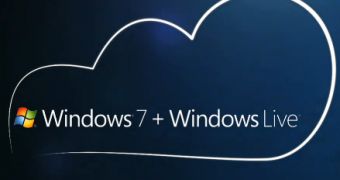Microsoft is pushing Windows into the Cloud, and for the time being, the company’s focus is on Windows 7, and understandably so. Also for the time being, Windows 7’s connection to the Cloud is largely limited to the rich clients packaged into the Windows Live Essentials 2011 suite.
At least this is the conclusion of the new “To the Cloud” marketing campaign put together for the successor of Windows Vista.
No less than four video advertisements have already been released, all of which embedded at the bottom of this article for your viewing pleasure.
But the actual message of the ads is not necessarily that Windows 7 is embracing the Cloud, or that Microsoft is committed to the Cloud, for that matter.
The way I see it, this is Microsoft’s way of introducing the Cloud to consumers, in a very friendly package.
Users are extremely familiar with Windows Live Essentials components such as Messenger, Mail, Photo Gallery, Movie Maker, etc.
What end users are not that familiar with is the Cloud. And I’m not talking about computer enthusiasts, IT professionals, and so on and so forth.
I’m referring to your average consumer that requires help to set up a computer, even with simple tasks that involve the installation of applications.
To them the Cloud continues to be an unfamiliar concept, and while some might hesitate little when it comes down to exploring this new territory, other could be comfortable enough anchored on the desktop, and not ready to expand their horizon that much, just yet.
Associating the Cloud with Windows Live Essentials makes this new paradigm of computing somewhat already familiar to customers.
And the trick for Microsoft, will be to step up its game with the next version of Windows. The software giant has opted to emphasize the extending of Windows 7 into the Cloud just as Google is putting the finishing touches on its own Cloud operating system.
Chrome OS is not only browser-centric, but it lives in the Cloud, far more so than Windows 7. Google’s open source platform is not limited to rich clients that offer bits and pieces of the Cloud.
Instead, it put the user and all associated digital “belongings” including data, apps, and content on Google’s servers. Microsoft has yet to offer such a complex hosted experience complementing Windows.
But the company should certainly consider it with Windows vNext. Windows 8 needs to evolve consistently from Windows 7’s “To the Cloud” push, per the company’s Software plus Services (S+S) model, of course, but also well beyond Windows Live Essentials Wave 5.
It’s good that consumer get familiarized with the concept of “the Cloud” in association with Windows Live Essentials, as I’ve already said, but there’s need for much more from the software giant.

 14 DAY TRIAL //
14 DAY TRIAL //